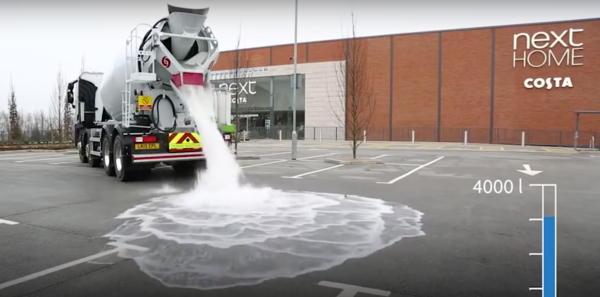Concrete – it’s all around you. You probably walk on it, drive on it, and maybe even sit on it! From a civil engineering standpoint, concrete really is a miracle material. But, it does have its downsides, especially in heavily developed urban areas. One of the most glaring of those downsides is the tendency for water to pool and flood on concrete. However, a new concrete formula could dramatically improve that by allowing water to drain quickly through the concrete itself.
While all unsealed concrete technically absorbs water, it does so very inefficiently and quickly becomes saturated. Once that happens, water will pool on the surface. This causes obvious problems for cars, as they become susceptible to hydroplaning. It also creates the potential for flooding in heavily paved areas.
This new concrete formula, called Topmix Permeable, is designed to reduce pooling by letting the water flow through at the rate of 600 liters per minute per square meter! It does this by using larger gravel pieces in the mix, which leaves bigger gaps for the water to drain down into. From there, it can be absorbed by the underlying soil, or routed safely away from roadways and parking lots.
Of course, this formula isn’t perfect. Its ability to pass through water also makes it likely to crack and quickly deteriorate in cold climates, as the water freezing and thawing inside the concrete will easily damage it. But, in warmer climates that receive a lot of rainfall in bursts, it could significantly improve safety.
Continue reading “Concrete With A Drinking Problem Could Reduce Flooding”













